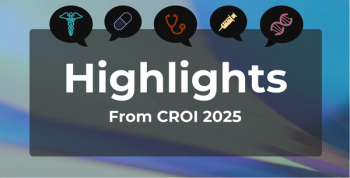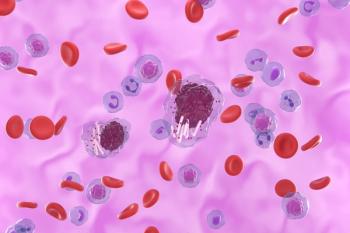
Contributor: Yearly Trends in Coverage Rates for GLP-1 RAs in Weight Loss
Key Takeaways
- Obesity prevalence is rising, with GLP-1 receptor agonists offering promising treatment options, yet access is limited by high costs and insurance restrictions.
- A study from 2021 to 2024 showed decreasing rejection rates for GLP-1 claims, indicating increased payer approvals over time.
Explore the evolving landscape of glucagon-like peptide-1 receptor agonists (GLP-1 RAs) for obesity, highlighting access challenges and payer coverage trends affecting treatment options.
Obesity is a growing health concern, and it is estimated that 1 billion people worldwide will be living with obesity by 2030.1 In the US, at least 1 in 5 adults today is living with the disease.2 Prior to 2013, no US state had an adult obesity prevalence at or above 35%. However, by 2023, CDC population data showed that in 23 states, more than 1 in 3 adults (35%) had obesity.2
The prevalence of obesity has sparked interest in pharmacological treatments, such as glucagon-like peptide-1 receptor agonists (GLP-1 RAs) originally developed for type 2 diabetes. Liraglutide (Saxenda; Novo Nordisk), semaglutide (Wegovy; Novo Nordisk), and tirzepatide (Zepbound; Lilly) are FDA-approved weight loss GLP-1 RAs that have demonstrated significant benefits.3
However, despite their promise, payer coverage of GLP-1 therapy for obesity remains a significant hurdle, as many patients face access challenges. In the US, the list price for GLP-1s can range from $936 to $1349 per month before insurance, rebates or other discounts.4 Of the 17 largest US commercial insurers, 11 provide some coverage for GLP-1 therapy for weight management. However, of this group, 9 insurers have imposed additional restrictions, such as prior authorization (PA) requirements.5
ICON carried out a study to assess changes in payer coverage and inform current patient access to GLP-1 RA use in weight loss. This descriptive retrospective analysis used ICON’s Symphony Health Integrated Dataverse, an open, multisource claims dataset representative of all US states and territories. We examined yearly trends from January 1, 2021, to October 9, 2024, in the dataset, which includes medical, hospital, and prescription claims across all payer types. Lifecycle pharmacy claims used for the analysis were tracked at the claim-transactions level for 13 months from the claim index date.
Patients with 1 or more pharmacy index claim for liraglutide, semaglutide, and
Primary end points were payer rejection rates, PA rejection rates, payer abandonment rates, and pull-through rates. Secondary end points were patient out-of-pocket (OOP) costs and time to overcome approved/reversed claims after initial rejection/PA.
Our analysis represented coverage of 3,400,315 patient lives and more than 8 million claims (Figure 1). Most of the patients were female (78%) and aged 30 to 60 years. Although not available for the full patient cohort, annual household income levels skewed toward $100,000 or higher. Most patients had some college (45%) or an associate/bachelor degree or higher (28%).
Key Takeaways
The overall rejection rate was 62.4%, with 31.1% of rejections due to PAs and 42% due to formulary exclusion. Over time, the overall rejection rate decreased: from 74% in 2021 to 60.5% by October 9, 2024 (Figure 2). This indicates that payers have increased approvals of GLP-1 claims each year, during the data period we assessed.
PA rejection rates also decreased over the 3-year period, signifying that payers are still considering GLP-1 RAs while consistently using PA as a reason for rejection (Figure 3).
Abandonment rates for patients approved for GLP-1 use were constant for 2021 (23.7%) and 2022 (23.4%). In 2023, the abandonment rate increased to 28.5% (Figure 4). This increase may be due to an increase in the overall number of claims submitted. It is difficult to draw conclusions on the reasons why patients do not pick up their medication. Cost is 1 potential reason, but further research is needed to discern the rationale behind the abandonment rate. In 2024, the abandonment rate decreased to 17.3%; however, this was not a full data year as the period measured ended onOctober 9.
Pull-through of all rejections and PA rates steadily rose from 2021 (16.3%) to 2023 (25.1%) before declining slightly in 2024 (24.3%) (Figure 5 and Figure 6). The mean duration to overcome a rejection was 7.19 days, with a median of 6 days, and the mean duration to overcome a PA rejection was 8.07 days, with a median of 7 days.
The patient OOP cost for both approved and reversed claims showed a decreasing trend (Figure 7 and Figure 8). However, there is a minor difference in how much a patient paid, or would have paid, for the prescription when comparing costs between approved and reversed claims. The OOP cost analysis did not include a comprehensive breakout of all patient assistance programs; it was meant as a high-level descriptive perspective of costs.
Limitations
This research could not cover all of the market dynamics. During 2023 and 2024,
Conclusion
The GLP-1 market is highly dynamic and merits further research and monitoring of payer policies to understand the impact on patient access. There appears to be a gradual increase in payer coverage of GLP-1 RAs, but in the years to come, it will be interesting to see what the corresponding effect will be on the prevalence of obesity in the US. It will also be worth monitoring changing trends on patient claims for associated comorbidities.
References
1. Lobstein T, Powis J, Thompson R, Jackson-Leach R. World Obesity Atlas 2025. World Obesity Federation; 2025. Accessed May 15, 2025.
2. New CDC data show adult obesity prevalence remains high. News release. CDC; September 12, 2024. Accessed May 15, 2025.
3. Vosoughi K, Salman Roghani R, Camilleri M. Effects of GLP-1 agonists on proportion of weight loss in obesity with or without diabetes: systematic review and meta-analysis. Obes Med. 2022;35(100456). doi:10.1016/j.obmed.2022.100456
4. Klein HE. Most insured adults still have to pay at least part of the cost of GLP-1 drugs. AJMC®. May 16, 2024. Accessed May 15, 2025.
5. Ally AJ, Bell D, Craff M, et al. Payer strategies for GLP-1 medications for weight loss: helping payers understand the landscape, develop a coverage strategy, and minimize waste. Milliman.August 25, 2023. Accessed May 15, 2025.
Newsletter
Stay ahead of policy, cost, and value—subscribe to AJMC for expert insights at the intersection of clinical care and health economics.









































